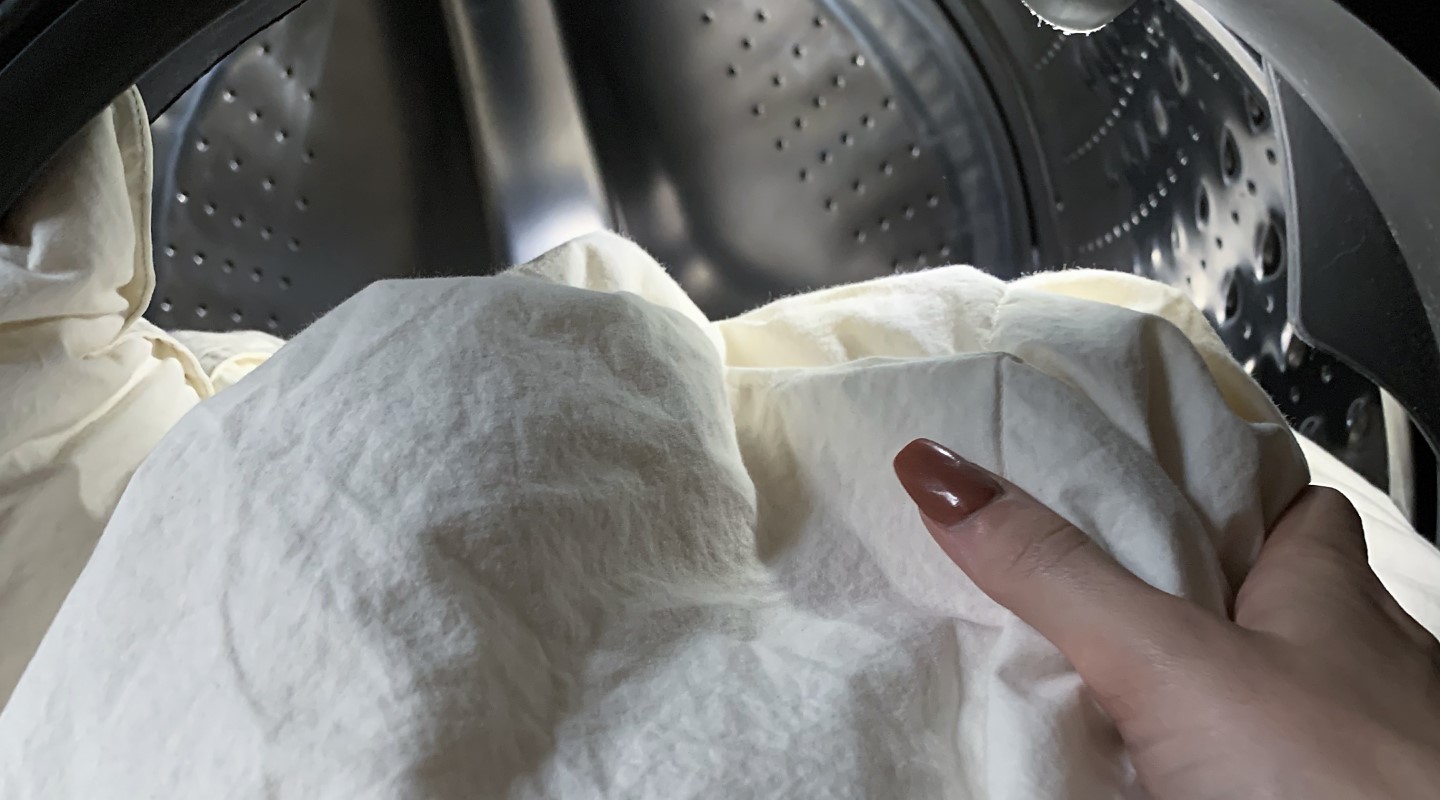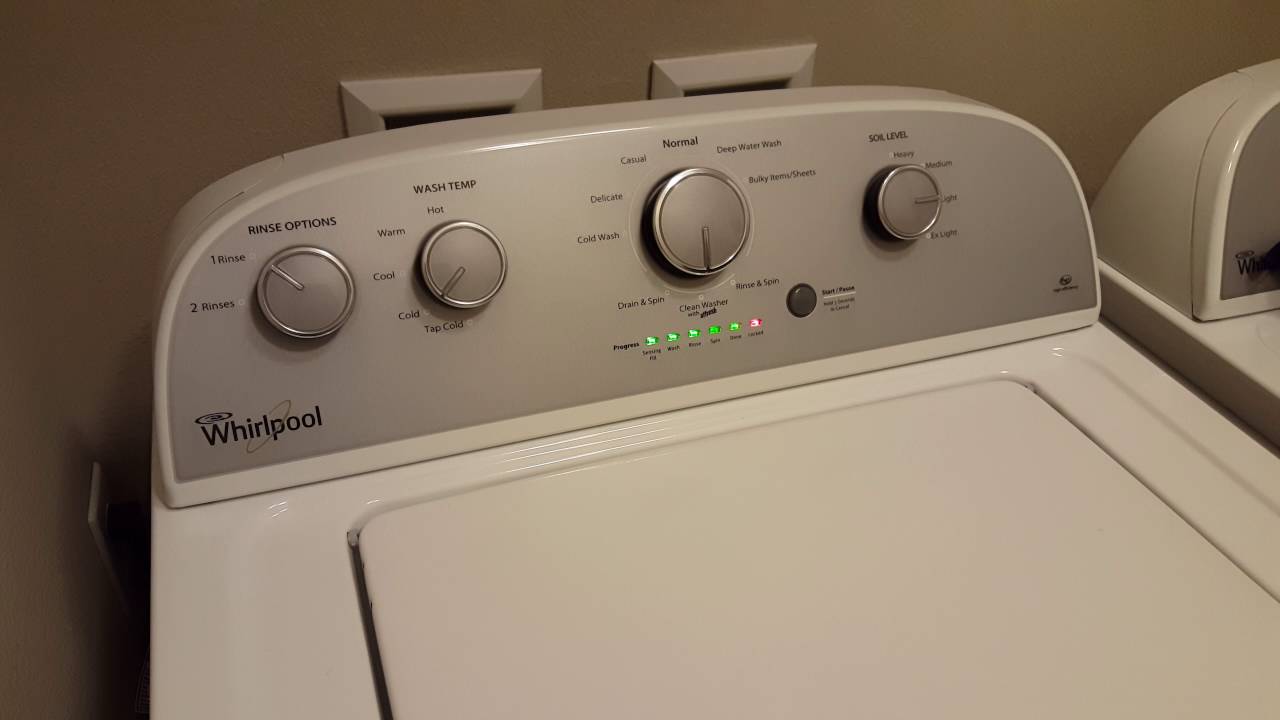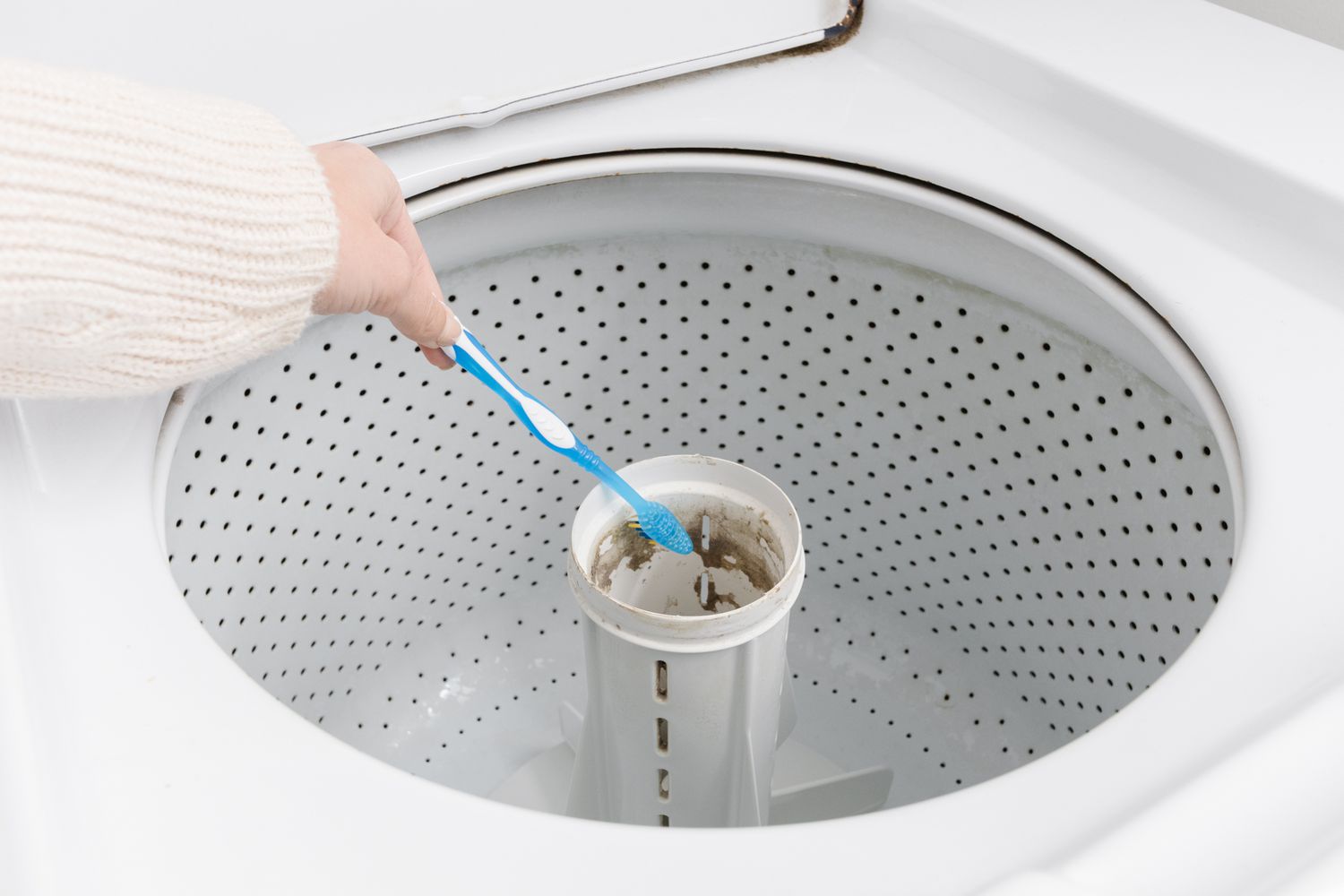Home>Home Appliances>Laundry Appliances>How To Wash A Quilt In A Washing Machine


Laundry Appliances
How To Wash A Quilt In A Washing Machine
Modified: August 27, 2024
Learn how to properly wash a quilt in a washing machine with our expert tips. Discover the best laundry appliances and techniques for keeping your quilt clean and fresh.
(Many of the links in this article redirect to a specific reviewed product. Your purchase of these products through affiliate links helps to generate commission for Storables.com, at no extra cost. Learn more)
Preparing the Quilt for Washing
Before you toss your beloved quilt into the washing machine, it's crucial to prepare it properly to ensure a successful and gentle cleaning process. Here's how to get your quilt ready for a refreshing wash:
-
Check the Quilt Label: Start by carefully examining the quilt's label for any specific washing instructions. Some quilts may require special care, such as hand washing or dry cleaning, so it's essential to follow the manufacturer's recommendations to avoid damaging the fabric or altering its appearance.
-
Inspect for Stains and Damage: Take a close look at the quilt to identify any stains or areas of damage. Spot-treat any stains with a gentle stain remover or a mixture of mild detergent and water. Additionally, mend any loose seams or tears to prevent further damage during the washing process.
-
Remove Decorative Embellishments: If your quilt features decorative embellishments like buttons, beads, or delicate trims, consider removing them before washing. These embellishments can be fragile and may not withstand the agitation of the washing machine. Carefully detach them and set them aside for reattachment after the quilt is clean.
-
Secure Loose Threads: To prevent tangling and potential damage during the wash cycle, secure any loose threads or embellishments that cannot be removed. Use small safety pins to secure these elements in place, ensuring that they remain intact throughout the washing and drying process.
-
Turn the Quilt Inside Out: Before placing the quilt in the washing machine, turn it inside out. This simple step helps protect the outer surface of the quilt, particularly if it features vibrant colors or delicate prints. Turning the quilt inside out can help minimize fading and preserve its visual appeal.
By taking the time to prepare your quilt for washing, you can ensure that it emerges from the washing machine clean, fresh, and in excellent condition. This thoughtful approach to pre-washing care sets the stage for a successful laundering process that maintains the beauty and integrity of your cherished quilt.
Key Takeaways:
- Prepare your quilt by checking the label, inspecting for stains, and removing embellishments. Turning it inside out before washing can help preserve its colors and prints.
- Choose a washing machine with a gentle impeller, delicate wash cycles, and temperature control. Use a quilt-friendly detergent to maintain the fabric’s integrity.
Read more: How To Reset A Washer
Choosing the Right Washing Machine
Selecting the appropriate washing machine for laundering your quilt is a crucial step in ensuring a thorough yet gentle cleaning process. Here's a detailed guide to help you make the right choice:
-
Capacity: When choosing a washing machine for your quilt, consider the size of the quilt and the machine's capacity. It's essential to select a machine with a capacity that accommodates the quilt without overcrowding the drum. Overloading the machine can hinder the cleaning process and may lead to inadequate rinsing.
-
Agitator vs. Impeller: Traditional top-loading washing machines are equipped with an agitator, a central post that moves clothes around for cleaning. However, agitators can be harsh on delicate fabrics and quilts. On the other hand, high-efficiency top-loading machines feature an impeller, a low-profile cone or disc that provides a gentler wash. For quilts, an impeller-equipped machine is often a better choice to minimize wear and tear.
-
Wash Cycles: Look for a washing machine that offers a delicate or hand wash cycle. These settings provide a slower and gentler wash motion, which is ideal for quilts. Additionally, some machines have a dedicated bedding cycle designed to handle larger items like quilts and comforters, ensuring thorough cleaning without causing damage.
-
Temperature Control: Opt for a machine with temperature control settings, allowing you to select the appropriate water temperature for washing your quilt. While some quilts can be washed in cold water to prevent color fading and fabric shrinkage, others may benefit from a warm or hot water wash to effectively remove stains and allergens.
-
Spin Speed: Consider the spin speed options offered by the washing machine. A lower spin speed is preferable for quilts, as it reduces the stress on the fabric and minimizes the risk of stretching or distortion. This gentle approach to spinning helps maintain the quilt's shape and integrity.
-
Additional Features: Some modern washing machines are equipped with features such as steam cleaning, extra rinse cycles, and customizable settings. These features can be advantageous for effectively cleaning and refreshing quilts, especially those with intricate stitching or delicate fabrics.
By carefully considering these factors, you can select a washing machine that aligns with the specific needs of your quilt, ensuring a thorough yet gentle cleaning process that preserves its beauty and longevity.
Using the Proper Detergent
Selecting the right detergent is a critical aspect of washing a quilt in a washing machine. The choice of detergent can significantly impact the cleanliness, color vibrancy, and overall condition of the quilt. Here's a comprehensive guide to help you navigate the world of laundry detergents and make an informed decision for your quilt:
Considerations for Quilt-Friendly Detergents
-
Gentle Formulation: Opt for a mild, gentle detergent specifically formulated for delicate fabrics. Look for detergents labeled as "gentle," "delicate," or "sensitive skin," as these formulations are designed to clean effectively while minimizing the risk of damage to delicate fibers and intricate stitching commonly found in quilts.
-
Free of Harsh Chemicals: Choose a detergent that is free of harsh chemicals, such as bleach, optical brighteners, and strong perfumes. These additives can be abrasive and may cause discoloration or deterioration of the quilt's fabric over time. A detergent with a minimal ingredient list is often a safer choice for preserving the quilt's integrity.
-
pH-Balanced: Look for detergents with a neutral or slightly acidic pH level. pH-balanced detergents are gentle on fabrics and less likely to cause color fading or fiber damage. This is particularly important for quilts with vibrant or dark-colored fabrics, as pH-neutral detergents help maintain the original color intensity.
-
Liquid vs. Powder: While both liquid and powder detergents can effectively clean quilts, liquid detergents are generally preferred for their ability to dissolve quickly and evenly in the wash water. Liquid detergents are less likely to leave residue on the quilt's surface, ensuring a thorough yet gentle cleaning process.
Specialized Detergents for Quilts
-
Woolite: Woolite is a popular choice for washing quilts due to its gentle formulation and suitability for delicate fabrics. It is specifically designed to clean fine washables, making it an ideal option for quilts with intricate stitching and delicate embellishments.
-
Free and Clear Detergents: Detergents labeled as "free and clear" are free of dyes and fragrances, making them a suitable choice for individuals with sensitive skin and for washing quilts with intricate patterns and multiple fabric types. These formulations are less likely to cause allergic reactions or fabric irritation.
-
Eco-Friendly Detergents: For those seeking environmentally conscious options, eco-friendly detergents made from plant-based ingredients offer a sustainable and gentle approach to cleaning quilts. These detergents are free of synthetic chemicals and are biodegradable, making them a preferred choice for eco-conscious consumers.
By carefully selecting a quilt-friendly detergent that aligns with the specific needs of your quilt, you can ensure a thorough and gentle cleaning process that maintains the quilt's beauty and longevity. The right detergent can make a significant difference in preserving the fabric, colors, and overall quality of your cherished quilt.
Read more: How To Reset Kenmore Washer
Setting the Washing Machine
Once you've prepared your quilt and selected the appropriate detergent, it's time to configure the washing machine for a gentle and effective cleaning cycle. Properly setting the washing machine ensures that your quilt receives the care it deserves during the laundering process. Here's a step-by-step guide to setting the washing machine for washing your quilt:
-
Water Temperature: Begin by selecting the appropriate water temperature for washing your quilt. As mentioned earlier, some quilts can be safely washed in cold water to prevent color fading and fabric shrinkage, while others may benefit from a warm or hot water wash to effectively remove stains and allergens. Carefully assess the fabric composition and any specific care instructions to determine the ideal water temperature for your quilt.
-
Wash Cycle: Choose a gentle or delicate wash cycle on the washing machine. Many modern machines offer specialized cycles designed for handling delicate fabrics and larger items such as quilts and comforters. These cycles typically feature slower agitation and extended soaking periods, ensuring a thorough yet gentle cleaning process that minimizes wear and tear on the quilt.
-
Detergent Dispensing: Add the appropriate amount of quilt-friendly detergent to the designated dispenser or directly into the washing machine drum. Refer to the detergent manufacturer's guidelines for the recommended dosage based on the load size and water hardness. Avoid overloading the machine with excessive detergent, as this can lead to soap residue buildup on the quilt.
-
Extra Rinse Option: If your washing machine offers an extra rinse option, consider activating this feature to ensure thorough removal of detergent from the quilt. An additional rinse cycle helps prevent detergent buildup, which can cause fabric stiffness and skin irritation. This step is particularly important for individuals with sensitive skin or allergies.
-
Spin Speed: Select a low or gentle spin speed to minimize stress on the quilt's fabric. A slower spin speed reduces the risk of stretching, distortion, or damage to the quilt, preserving its shape and integrity. Avoid high-speed spinning, especially for delicate or heirloom quilts, as it can lead to excessive wrinkling and potential fabric damage.
By carefully configuring the washing machine settings according to the specific needs of your quilt, you can ensure a thorough yet gentle cleaning process that maintains the quilt's beauty and longevity. Taking the time to set the washing machine appropriately demonstrates a commitment to preserving the integrity of your cherished quilt while achieving optimal cleanliness and freshness.
Drying the Quilt after Washing
After the careful washing process, it's essential to pay equal attention to the drying phase to ensure that your quilt emerges fresh, clean, and beautifully preserved. Proper drying techniques can significantly impact the quilt's longevity and overall condition. Here's a detailed guide on how to effectively dry your quilt after washing:
Air Drying
Air drying is often the preferred method for drying quilts, especially those made with delicate fabrics or intricate stitching. Follow these steps for successful air drying:
-
Flat Surface: Lay the quilt flat on a clean, dry surface, such as a large bed or clean floor. Smooth out any wrinkles and ensure that the quilt is evenly spread to facilitate uniform drying.
-
Ventilation: Choose a well-ventilated area for drying the quilt. Adequate airflow helps expedite the drying process and prevents musty odors from developing.
-
Flip and Rotate: Periodically flip and rotate the quilt during the drying process to promote even air circulation and prevent moisture buildup in specific areas.
-
Avoid Direct Sunlight: While natural sunlight can aid in drying, prolonged exposure to direct sunlight may cause fading, especially for quilts with vibrant colors. If sunlight exposure is unavoidable, consider placing the quilt in a shaded area to minimize potential color changes.
-
Patience: Air drying may take longer than using a dryer, but it offers a gentle and effective method for preserving the quilt's fabric and construction. Exercise patience and allow the quilt to dry thoroughly before use or storage.
Machine Drying
If using a dryer, follow these guidelines to ensure safe and effective machine drying:
-
Low Heat Setting: Set the dryer to a low heat or delicate cycle to prevent excessive heat exposure, which can cause fabric shrinkage and damage.
-
Tennis Balls or Dryer Balls: Place clean tennis balls or specialized dryer balls in the dryer with the quilt to help fluff and evenly distribute the quilt during the drying process.
-
Monitor Progress: Periodically check the quilt's progress during the drying cycle to prevent over-drying. Remove the quilt promptly once it is fully dry to avoid unnecessary heat exposure.
-
Immediate Folding: Once dry, promptly fold the quilt and store it in a clean, dry area to prevent wrinkling and maintain its freshness.
By carefully selecting the appropriate drying method and following these detailed steps, you can ensure that your quilt dries effectively while preserving its beauty and integrity. Whether air drying or using a dryer, the goal is to achieve thorough drying without compromising the quilt's quality.
Frequently Asked Questions about How To Wash A Quilt In A Washing Machine
Was this page helpful?
At Storables.com, we guarantee accurate and reliable information. Our content, validated by Expert Board Contributors, is crafted following stringent Editorial Policies. We're committed to providing you with well-researched, expert-backed insights for all your informational needs.















0 thoughts on “How To Wash A Quilt In A Washing Machine”